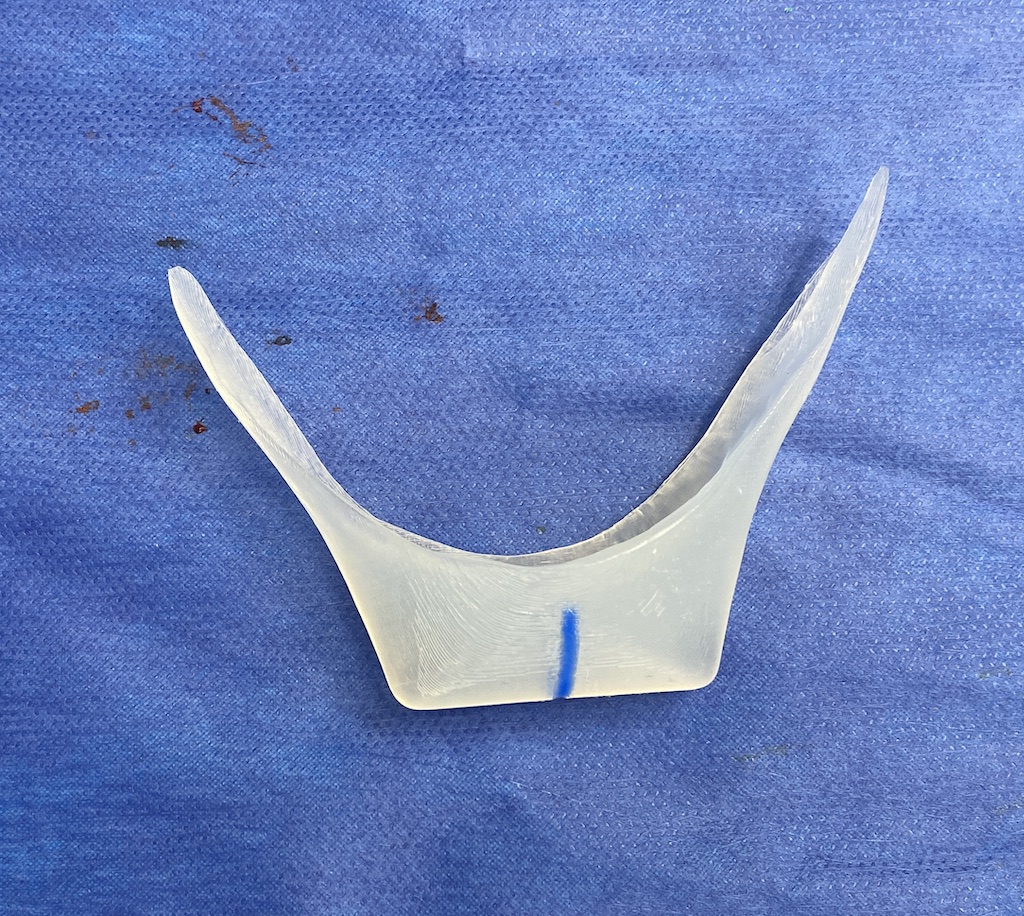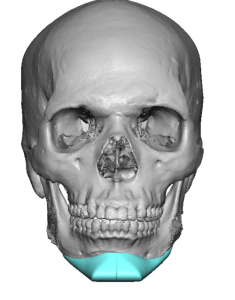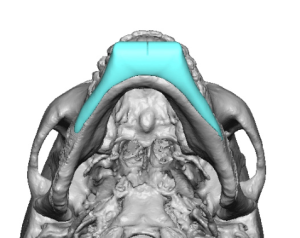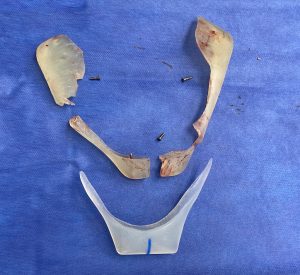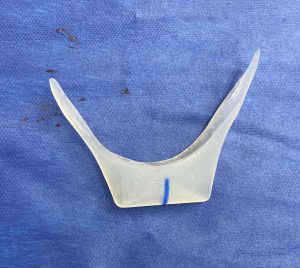Background: Total or complete lower jaw augmentation of any significance can really only be done by a custom wrap around jawline implant. By creating an augmentation line along the entire inferolateral bony border from one angle to the other a true 3D jaw augmentation is obtained. To compare what this type of implant can do compared to the non-surgical approach (injectable fillers) custom jawline implants an range in size from 8 to 32ccs in volume with the average implant volume for most men in the 14 to 18ccs.
But despite the many advantages of custom jawline implants they are not perfect. They still must be placed as designed (which is not always assured) and there is no way to predict with absolute accuracy as to what the design will do compared to the patient’s aesthetic expectations. For these reasons alone the revision of custom jawline implants is not low. In my extensive experience with custom facial implants, and custom jawline implants in particular, the revision rates are in the 20% to 30% range.
But there is one reason that can result in a custom jawline implant revision or removal that can never be predicted beforehand. This is where even unknown to the patient before surgery, no matter how much computer imaging is done, the patient can never adjust to the facial change after surgery. This almost always has nothing to do with how others see it or even if it is a good overall result. It is postoperative facial dysphoria, a condition never really described or discussed…but one that is very real even if it is uncommon.
I will see such cases of postoperative facial dysphoria once or twice a year and it is most commonly seen in custom facial implants. (Although it can occur with any facial structural reshaping surgery. The patient will have a very good result with no problems but it looks unnatural to them. In essence they don’t recognize themselves and they feel the change makes them look too different. In this situation the discussion revolves around whether they want to go all the way back to what they were (implants removal) or is their some benefits to be gained from the indwelling implant. (implant replacement/revision)
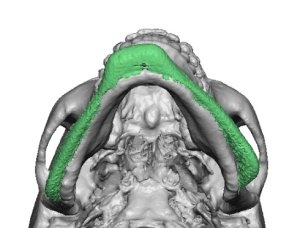
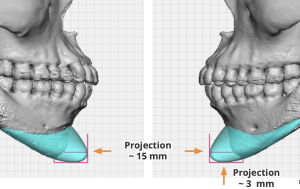
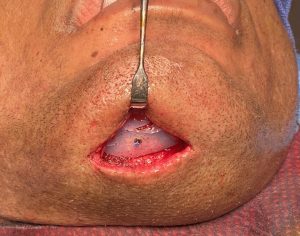
Despite the prior tissue expansion in the chin area it was necessary to do some modifications of the width of the new custom chin implant to make it fit. Much of that need came from trying to pass such a large chin implant through the existing length of the submental incision. But eventually passage and placement was able to be done with a single midline 17mm screw fixation of the implant to the bone.
Placement of large custom jawline implants can make for major facial changes. While most patients take well to the changes there is always going to be a handful of patients every year that make the discovery that what they thought they wanted is not a good change and they want to go back ‘home’ where they are more familiar. Most remove their implants completely while others come to the conclusion less is better. In this case the initial chin deficiency was the major jaw issue and that became the secondary salvage surgery.
Case Highlights:
1) The success of custom jawline implants is dependent on accuracy of placement, design:expectation correlation and the patient’s acceptance of the facial change.
2) An indwelling custom jawline implant after placement provides the patient insight about the aesthetic effects of the design as well as what type of facial change they find most acceptable.
3) The expansion of the chin soft tissues from an indwelling custom jawline implant allows a new custom chin implant to be bigger than the original design.
Dr. Barry Eppley
Indianapolis, Indiana

